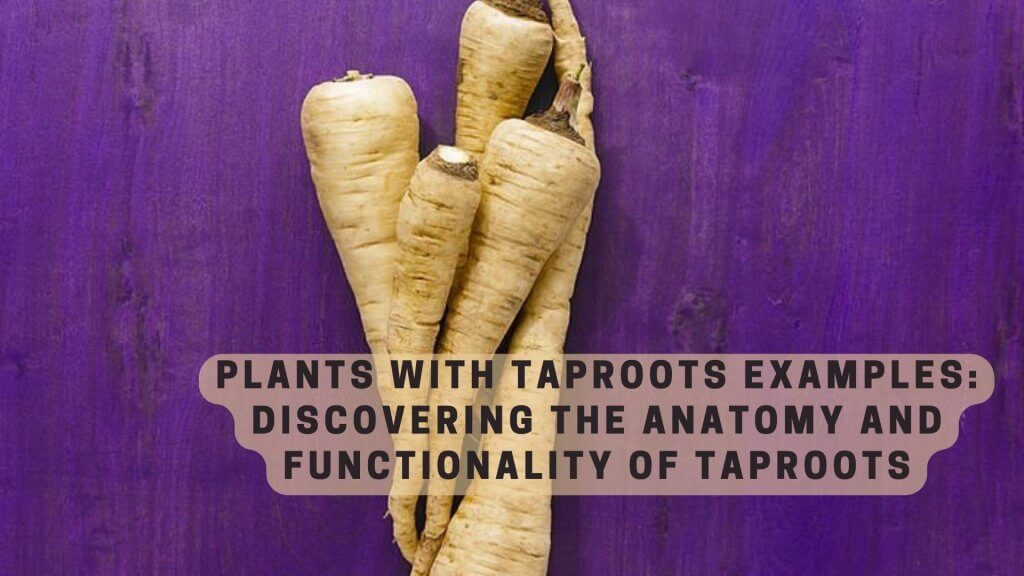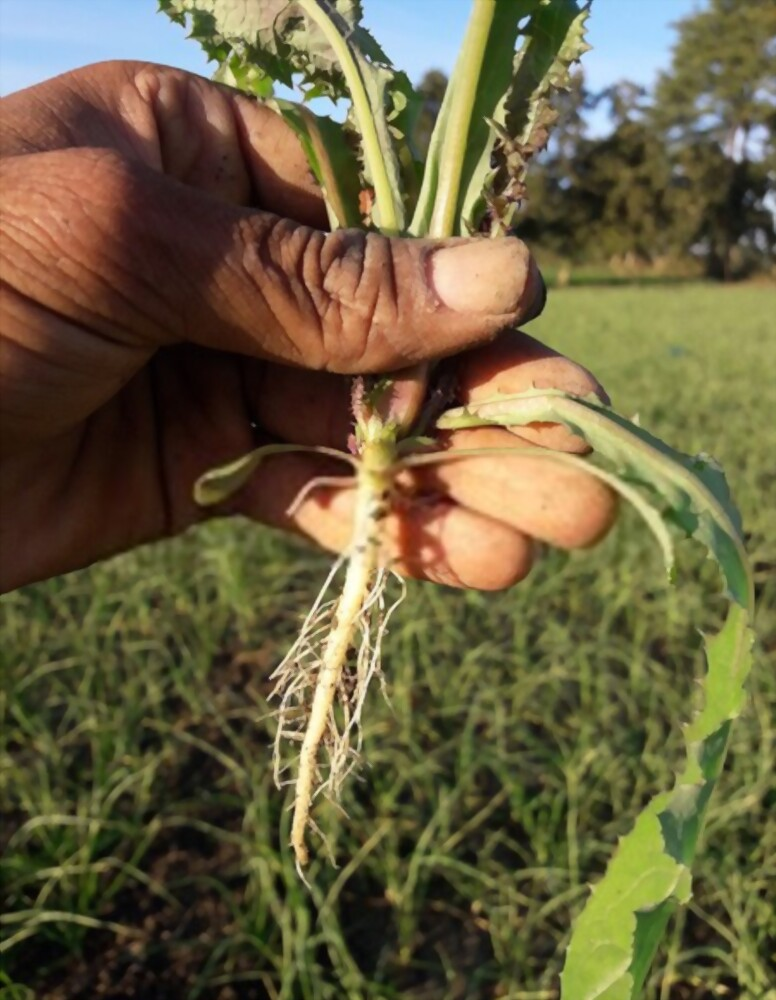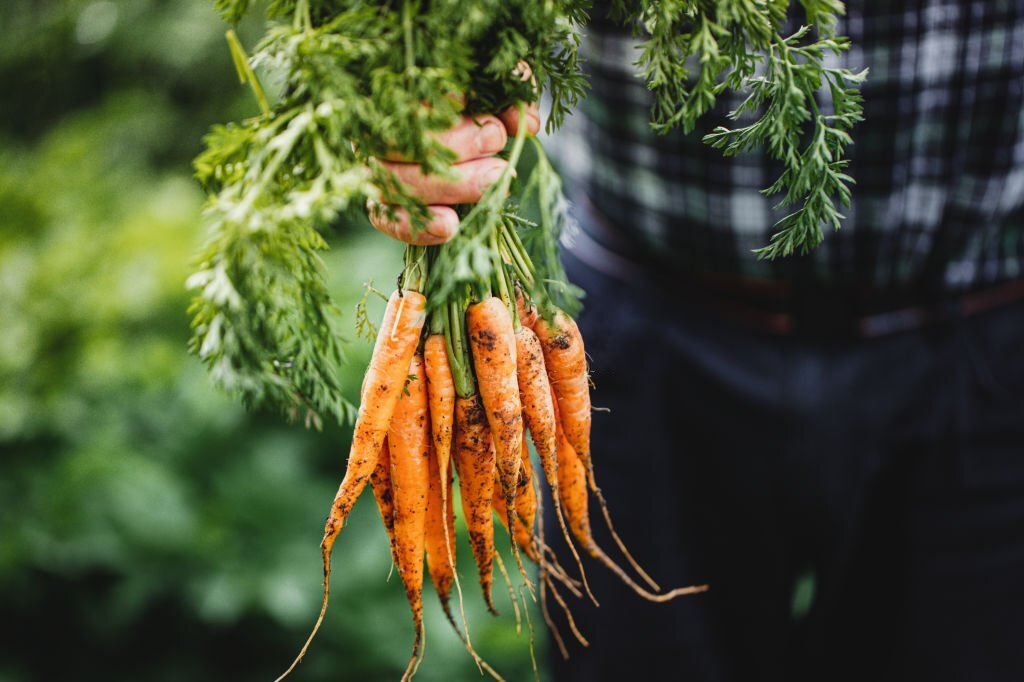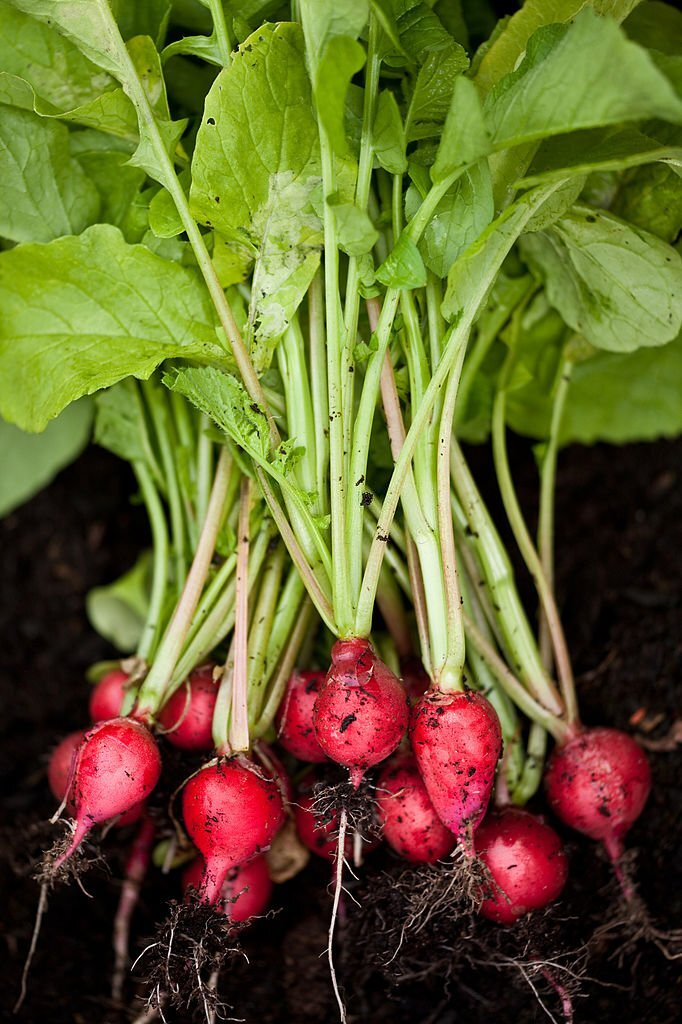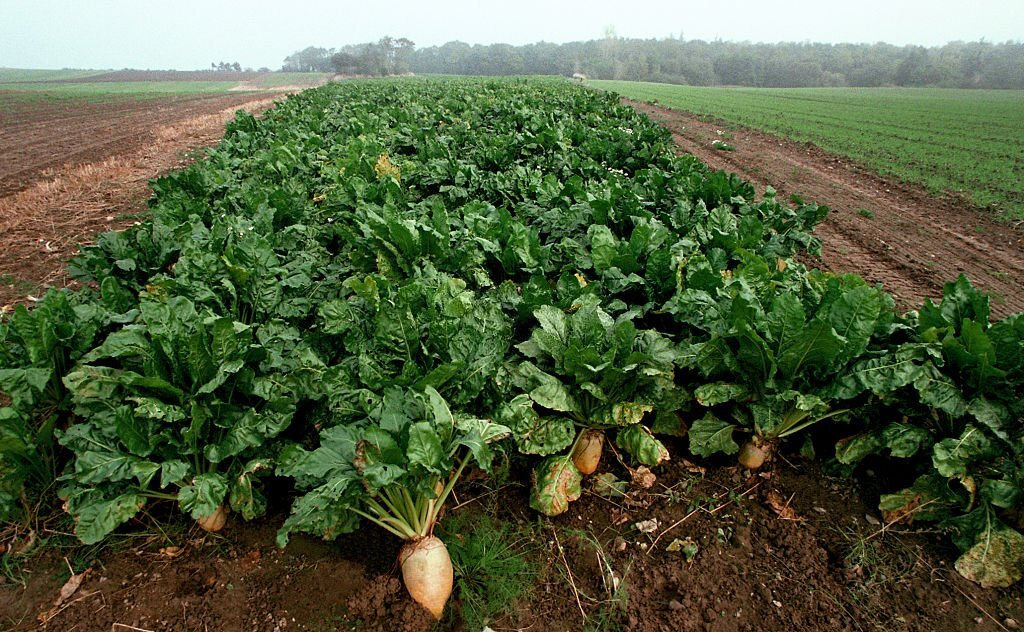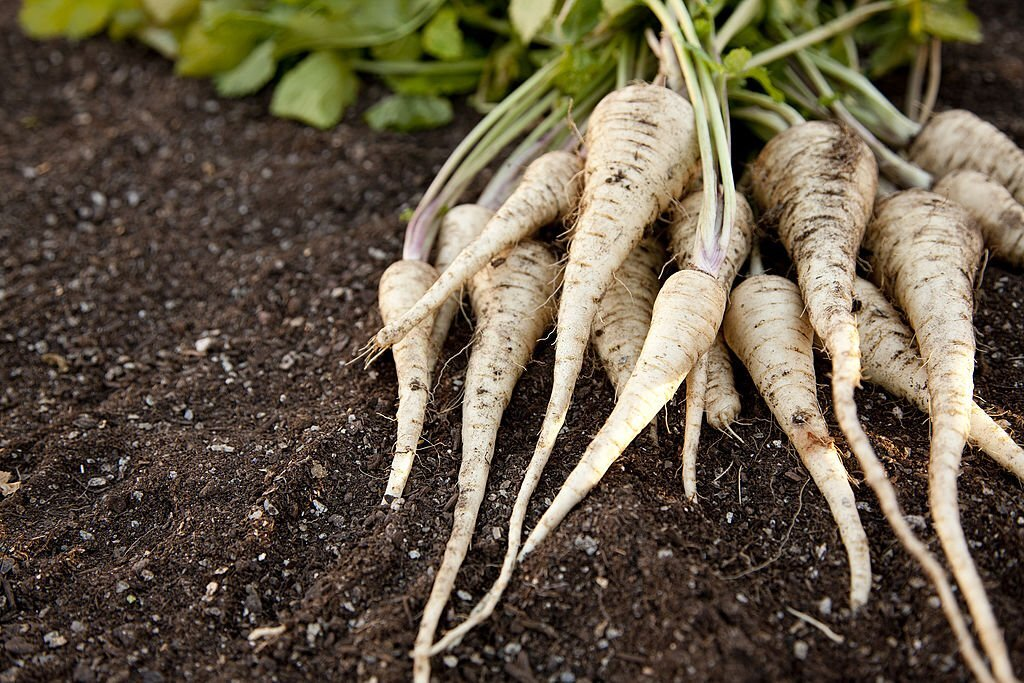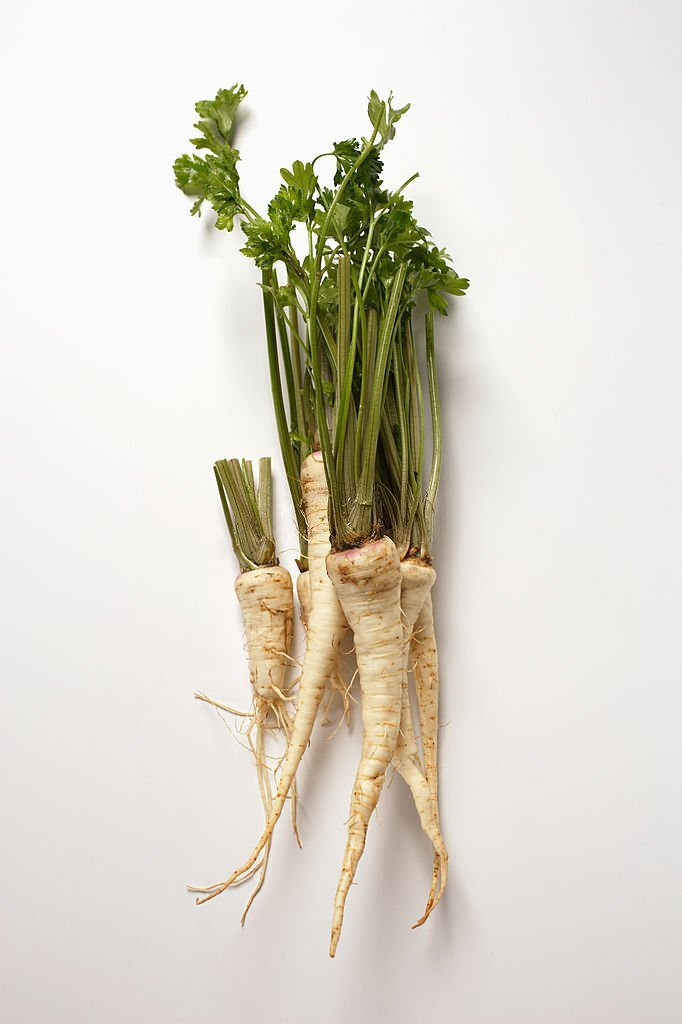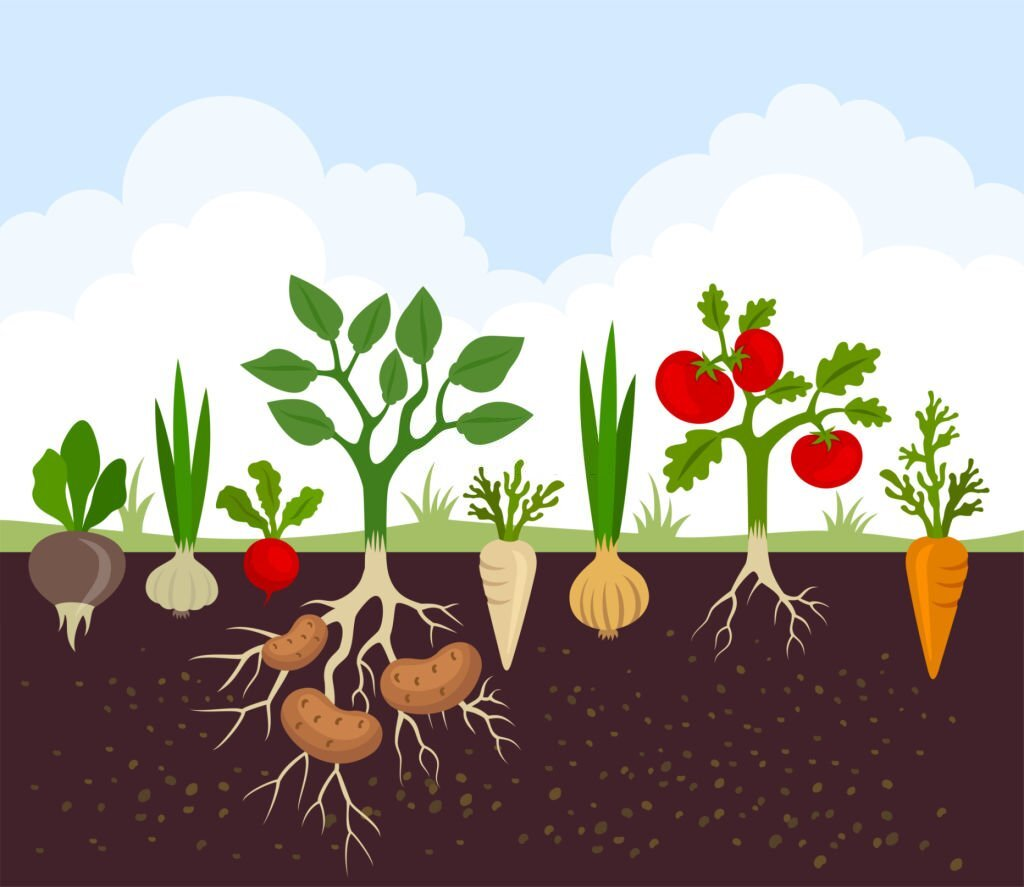Have you ever wondered what types of plants have taproots? Plants with taproots are unique species that can be found around the world. They serve an important purpose in nature and provide many benefits to their environment. In this article, we’ll explore some of the most common plants with taproot examples from different parts of the world.
Plants with taproots are usually characterized by a large single root that grows downward into the soil. This type of root system helps them access nutrients more efficiently and store more water than other plant species. As they grow and develop, these roots become stronger and longer, allowing them to penetrate deeper into the ground for even greater stability. Furthermore, these roots also help anchor plants against strong winds or storms, providing additional support during bad weather conditions.
Taproot systems come in all shapes and sizes depending on the type of plant it is attached to. Some common examples include carrots, parsnips, turnips, radishes, dandelions and chicory – just to name a few! Each one has its own purpose in nature; from helping prevent soil erosion to providing food sources for various wildlife populations. With so many different varieties available out there, let’s take a look at some of the most popular taproots plants examples from around the globe!
What Is A Taproot System?
A taproot system is an underground root structure that grows vertically down from the stem of a plant. It’s shaped like an inverted cone and has multiple roots branching off its sides. Taproots are typically found in biennial or perennial plants, with some annuals also possessing them. They provide stability for the plant, as well as anchoring it to the ground and allowing it to absorb more water and nutrients than other types of root systems. Plus, they can reach deeper into soil layers for access to subsurface moisture. So, you could say that taproots are a lifeline for many plants!
The main difference between a taproot system and other types of root structures lies in its shape; while most roots spread out horizontally, taproots grow downwards – hence why they’re called ‘tap’ roots. This form helps distribute weight evenly throughout the entire organism by providing support at all angles. Additionally, since their primary goal is to source essential resources such as water and minerals from deep within the earth, these specialized organs often penetrate far beneath the surface.
Taproots have been around for millennia; it was first recorded by ancient civilizations over 5,000 years ago when farmers noticed certain crops had unusually thick main stems near their base. Today we understand this phenomenon better thanks to modern scientific studies revealing how critical these structures are to overall plant health and growth. All said, there’s no denying that taproots play an integral role in keeping plants alive and thriving!
Types Of Taproots
Types of taproots can be classified according to their shape. One type is a fusiform root, which resembles a carrot or parsnip and has an elongated body with lateral roots that emerge from the sides. Another type is the conical taproot, which has a narrow base that tapers off into multiple branches near the surface of the soil. Lastly, there’s the napiform root, which looks like a turnip and tends to have many small side-branches growing close together in addition to its main stem.
The size and shape of each type of taproot varies greatly depending on environmental factors such as temperature, water availability, and nutrient content in the soil. For example, hot temperatures can cause some plants to produce longer taproots than those grown in cooler conditions. Similarly, dry soils tend to produce shorter taproots because they require less energy for growth due to a lack of available moisture.
Taproots also differ significantly based on plant species. Some plants may only form shallow taproots, while others will grow larger ones with greater depth penetration into the ground. Additionally, taproots are traditionally found in dicotyledonous plants but monocots can possess them as well if certain conditions are met during germination.
These differences illustrate how important it is for plants to create deep-rooted systems that provide access to essential nutrients and other resources within the environment they inhabit.
Function Of The Taproot
Fascinatingly, the taproot system used by some plants serves a variety of purposes that are essential to their survival. This root system is composed of one main, thick, fleshy root with smaller lateral roots extending from it. The highly efficient taproot has several important functions: first and foremost, it allows for deep absorption of water and nutrients from far below the surface in order to provide sufficient nutrition for plant growth; secondly, its structure helps anchor large plants firmly into the ground which prevents them from being uprooted during strong winds or storms; lastly, the presence of such an extended root also increases aeration around the soil particles which greatly improves oxygen levels within the substrate.
The taproot systems found in certain types of grasses and herbs have long been praised for their ability to reach deeper reservoirs of moisture underground than shallow-rooted species can manage. Moreover, as these larger roots travel downward, they break through compaction layers that exist beneath soil surfaces allowing more air to reach belowground – this creates better drainage conditions and promotes healthy root development. Additionally, its length permits easier uptake of minerals like potassium and phosphorus, which may be located further down in the subsoil region where other plants cannot access them easily.
Perhaps most intriguingly, though, is how a single taproot can store significant amounts of energy over time due to its large diameter and massiveness compared to other kinds of roots. Perennial plants such as carrots or parsnips possess very large storage organs at their base called ‘fleshy taproots’ – these structures act as food reserves enabling life forms to endure unfavorable weather conditions whilst simultaneously providing them with strength when needed throughout periods of drought or frost.
With all these impressive features combined together under one umbrella term, it’s clear why such a specialized type of root system is so crucial for many different plants’ successful existence on Earth today. Taproots serve as both lifelines connecting organisms with vital resources hidden away deep underground but also as safety nets safeguarding against environmental catastrophes that could otherwise devastate entire ecosystems overnight.
Understanding how those who rely upon it will continue flourishing into future generations thus should remain a top priority if we are ever going to make any real progress towards preserving our planet’s biodiversity effectively moving forward. By studying what makes up a typical taproot system we gain valuable insight into just how much power nature holds – not only in terms of sustenance but resilience too!
Plants With Taproot Systems
Taproots are a type of root system composed of one large, main root that grows downward from the stem. The taproot can be either fusiform or napiform in shape and serves as the primary source of nutrients for the plant. Fusiform taproots grow vertically with a tapered point at the bottom, while napiform taproots have a more bulbous shape and often branch off in other directions.
Some examples of plants with tap roots include carrots (Daucus carota subsp. sativus), radishes (Raphanus raphanistrum) and parsnips (Pastinaca sativa).
In addition to these three vegetables, there are many other species that rely on their deep-reaching taproot systems to gain access to vital water reserves located lower down in soil layers. These include plants like dandelions (Taraxacum officinale) and chicory (Cichorium intybus). Dandelion’s yellow flower has an underground crown connected to its fibrous aerial stems via a single, elongated root known as a “creeping root” due to its ability rapidly spread outwards across lawns and gardens alike. Chicory is another example capable of sending out both long lateral shoots along surfaces as well as deeper penetrating vertical sprouts into surrounding soils.
Taproots are crucial components within any garden or landscape, providing both structural stability as well as nutrient support for growing vegetation throughout all seasons. With careful tending, they offer gardening great potential through increased yields over time when properly managed.
Carrot (Daucus Carota Subsp. Sativus)
The carrot is a plant with a taproot, which is the main root of its system. It grows downward and can become quite long depending on the variety of carrots grown. The taproots of some carrots may reach up to two feet in length! Carrots are biennial plants, meaning they produce leaves and flowers only during their second year of growth.
The bright orange color associated with carrots is due to high levels of carotene, an antioxidant that helps protect against disease. Carrots also contain high amounts of Vitamin A and other essential vitamins and minerals for humans. These factors make them an important part of any healthy diet. Their sweet taste also makes them popular as snacks or ingredients in recipes like soups and salads.
Carrots have many uses beyond just being eaten fresh or cooked in dishes. One example is juicing; it’s easy to extract nutritious juice from raw carrots by simply running them through a juicer machine. Additionally, powdered carrot powder can be added to smoothies or used as an ingredient in baking recipes such as cakes, muffins, breads, etc. To store carrots properly, they should be kept cool until ready to use; otherwise, they could spoil quickly if left at room temperature too long.
Carrot taproots can vary greatly in size and shape depending on the type of carrot grown – some varieties are short and stubby, while others are longer and more slender. When selecting carrots at the grocery store or farmers’ market, look for ones that appear firm without any bruises or blemishes on their skin – these will provide the most nutritional value when consumed fresh! With their tasty flavor profile and abundance of health benefits, it’s no wonder why carrots remain one of the most popular vegetables around today! Transitioning into the next section about radish (Raphanus sativus), this vegetable has a similar yet distinct set of culinary applications compared to those offered by its cousin: the carrot.
Radish (Raphanus Sativus)
Taproots have an important role in providing stability and nutrition to plants like radishes. These napiform taproots can grow significantly deep, allowing them easy access to essential minerals and other resources necessary for growth. This makes these plants more drought-tolerant than those without deep-rooted systems. Additionally, their strong structure helps stabilize the plant against heavy winds or other extreme weather conditions.
These features make radishes resilient crops that can be grown year-round with minimal effort. As such, they are popularly used as condiments in many dishes around the world. With its edible leaves and roots being packed full of vitamins A, C, E and K alongside powerful antioxidants, it’s no wonder why people enjoy adding this vegetable to their diets!
The ever-versatile radish is thus an ideal choice for gardeners who want something hardy yet flavorful in their gardens – all thanks to its unique taproot system. Without further ado, let us move on to our next topic – sugar beet (Beta vulgaris).
Sugar Beet (Beta Vulgaris)
Sugar beet (Beta vulgaris) is a common taproot example. It belongs to the Beta genus and is primarily grown for its large, sweet-tasting root that can be processed into sugar. This plant has been cultivated for centuries for human consumption as an energy source or food crop.
| Characteristic | Description |
|——————-|——————|
| Botanical Name | Beta vulgaris |
| Plant Type | Biennial |
| Sun Exposure | Full sun |
| Soil Type | Sandy |
| Hardiness Zones | 4-9 |
The Sugar Beet’s taproot grows deep down into the soil in order to access water and nutrition from greater depths than shallow-rooted plants could reach. Additionally, it also forms lateral roots, which branch out horizontally near the surface of the soil to form a strong and stable fibrous root system. The taproots are edible when cooked and have a very sweet taste due to their high sucrose content.
Because of its high yield potential, this plant has become popular among farmers who use it mainly as a cash crop instead of just relying on other crops such as wheat or corn for their income. Its popularity led to increased research into improved varieties of plants with desirable traits such as disease resistance, higher yields, better storage qualities, etc., which helped further boost production levels.
The versatility of this plant makes it quite versatile in terms of uses; it can be used both fresh or processed into various products like flour, juice concentrates, animal feed pellets, etc., making it one of the most economically important plants around the world today. With its resilient nature and extended lifespan due to its biennial habit, Sugar Beet is certainly a great example of how effective taproots can be at helping plants thrive in challenging environments. Transitioning now to dandelion (taraxacum officinale), another excellent example of a long-lived perennial with potent taproots…
Dandelion (Taraxacum Officinale)
The dandelion (Taraxacum officinale) is a common plant with a large taproot. This taproot can be conical in shape and typically grows to depths of twelve inches or more. The root system that supports the taproot consists of small fibrous roots spread out around it. These roots are essential for providing nutrition and water to the plant, as well as helping keep its structure upright.
In addition to its deep taproots, the dandelion also has an extensive network of shallow lateral roots near the surface of the soil. These lateral roots form a dense web-like system that helps stabilize the plant’s growth and keeps it from being uprooted by strong winds or heavy rains.
Dandelion leaves are long, serrated, and lobed at their tips. They grow opposite one another along the stem and have been known to reach lengths up to twenty inches in some cases. When they first emerge from the soil, they tend to be bright green but may develop reddish hues if exposed to direct sunlight over time.
The flowers on a dandelion are yellow in color and surrounded by white petals, which open up into a star-shaped pattern when fully bloomed. Each individual flower lasts only about two days before withering away; however, new ones will continuously appear throughout much of the year until winter sets in. With this cycle, these plants provide both beauty and sustenance through most seasons of the year. Transitioning between topics now: Parsnips (Pastinaca sativa) are closely related vegetables sharing similar traits with dandelions…
Parsnip (Pastinaca Sativa)
The next plant with a taproot is the parsnip (Pastinaca sativa). It is a biennial, meaning it takes two years to complete its life cycle. This root vegetable grows best in cool climates and has a long, white central taproot that can grow up to 12 inches long. Parsnips have an earthy flavor similar to carrots and are often used as part of savory dishes. Here are some features associated with this plant:
1. The leaves of the parsnip form fern-like clusters at the top of tall stems.
2. Plants flower during their second year in early summertime and produce flat, umbrella-shaped flowers which range in color from white to purplish pink.
3. Parsnips do not like competition from other plants, so they should be planted away from other vegetables, such as beet plants or onions.
4. The roots must be harvested before the ground freezes for storage or to be eaten fresh throughout the winter months.
Parsnips provide essential vitamins and minerals, including folate, potassium, magnesium, calcium, phosphorus and Vitamin C; thus making them a healthful addition to any diet! With proper care, you can enjoy these tasty roots all season long! In moving forward on our journey through plants with taproots, we come now to parsley root (Petroselinum crispum).
Parsley Root (Petroselinum Crispum)
Parsley root, or Petroselinum crispum, is a plant with an impressive taproot system. Despite its reputation for being difficult to cultivate due to its need for specific soil conditions, when it is properly cared for, parsley root can produce robust plants and even edible roots.
The most important factor in cultivating parsley root is having the right kind of soil – sandy loam works best as this will give the taproots enough room to spread out without becoming compacted. Parsley root also needs plenty of nutrients like nitrogen and phosphorus, which should be added regularly throughout the growing season to ensure healthy growth. Additionally, these deep-rooted plants help reduce soil erosion as they anchor themselves firmly into the ground while absorbing water from deeper levels than shallow-rooted plants.
Below is a table summarizing why parsley root is such an ideal crop:
| Advantages | Disadvantages |
| ——————————|——————|
| Deep rooting reduces soil erosion | Difficult cultivation |
| High nutrient requirements promote vigorous growth | Unpalatable raw |
| Edible roots | Slow germination |
By providing numerous benefits while requiring only minor disadvantages, parsley root makes an excellent addition to any garden. This hardy plant helps keep soils intact by preventing runoff during heavy rains that would otherwise cause extensive damage through flooding or erosions. Plus, it provides delicious nutritional rewards!
Difference Between Taproot And Fibrous Root Systems
Taproots and fibrous root systems are two different types of root growth found in plants. Taproots have a single main root that grows downward, while fibrous roots produce many small lateral roots with no central leader. Each type of system has advantages and disadvantages.
Here is a list of the differences between taproot and fibrous root systems:
1. Longevity: Taproots tend to live longer than their fibrous counterparts as they can store energy for later use.
2. Nutrient Uptake: Fibrous roots take up nutrients faster as nutrients are distributed throughout the soil more evenly and quickly compared to taproots.
3. Water Absorption: As a result of its deep penetration into the ground, taproots absorb moisture from deeper levels than fiberous roots, which remain closer to the surface of the soil.
4. Root Type: Plants with shallow-growing, woody taproots, such as carrots or beets, belong to a taproot type, whereas those with multiple, fine-branching lateral roots, like grasses or wheat, belong to a fibrous type.
No matter what type of plant it is, these specialized structures play an important role in providing support, stability and access to water and minerals essential for healthy growth and development over time. Understanding how each type works helps gardeners decide which plants will best fit their gardens’ needs when choosing varieties to grow and cultivate successfully.
Benefits Of Growing Plants With Taproots
Taprooted plants may not be glamorous, but they can provide a variety of benefits to the gardener. The deep root systems of plants with taproots are excellent for nutrient absorption and water retention. They also help bring up minerals from deeper down in the soil, making them great soil improvers. Root vegetables like carrots, turnips, parsnips, and radishes all have taproots that taper off steadily as they grow downwards into the ground.
These types of roots allow the plant to access more nutrients than shallow-rooting varieties. This is especially beneficial when growing in poorer soils or areas where there isn’t much topsoil available. In addition to their ability to take advantage of lower-quality soils, these plants often require less frequent watering since their deep roots store moisture better than shallow ones do.
Plants with taproots aren’t just good for gardeners; they’re also beneficial for wildlife habitats! These types of roots attract many different animals and insects who feed on their nectar and pollen or use them as shelter from predators. Some species even rely on these underground structures for food during cold winter months when other sources become scarce.
Besides providing sustenance and shelter to animals, plants with taproots offer numerous advantages to humans too: they don’t need staking due to their strong stems; they’re drought tolerant because of their deep root systems; and most importantly, they produce an abundance of delicious fruits and veggies! Planting requirements for taprooted plants vary depending on what type you choose, so it’s important to research each one before deciding which is right for your garden.
Planting Requirements For Taprooted Plants
When growing plants with taproots, it is important to consider the planting requirements. To ensure optimal growth and health of these root vegetables, there are a few key factors to keep in mind.
| Requirements | Benefits |
|—————–|———————————–|
| Sandy Soil | Reduces soil erosion |
| Loose Soil | Allows for deeper root penetration|
| Rich Nutrients | Faster growth rate |
Light, sandy soil can help reduce soil erosion and allow for easier seed germination. Additionally, loose soils will provide better space for the plant’s roots to penetrate into the ground more deeply. When planting any type of vegetable crop, adding compost or fertilizer that is rich in nutrients will give them an extra boost during their early stages of development. This will lead to faster growth rates and healthier plants overall.
Another aspect of planting taprooted plants is knowing which varieties work best together and when they should be planted. For example, daikon radish can often overshadow other smaller crops due to its large leaves; therefore, companion planting may need to be considered before sowing seeds together. It’s also important to know when each variety matures so you can plan ahead accordingly and stagger your harvests throughout the season.
With proper planning and attention given to certain aspects of these types of crops, anyone can successfully grow different kinds of root vegetables in any garden setup. With knowledge about the necessary requirements for successful cultivation under one’s belt, determining common pests and diseases affecting plants with taproots becomes much easier as well.
Common Pests And Diseases Affecting Plants With Taproots
It’s true that plants with taproots are known for their resilience to pests and diseases, but it doesn’t mean they’re immune. The primary root of a plant with a taproot system is more resistant than the fibrous roots of other types of plants, and this helps them to withstand certain environmental stresses like drought better; however, if any one part of the root becomes diseased or infested by pests, it can spread quickly throughout the entire root system.
Aphids and caterpillars are two common pest problems when growing plants with taproots. Aphids damage stems, leaves, flowers and fruit while sucking out sap from the plant. Caterpillars feed on foliage at night time, which weakens the overall health of the plant. Fungal diseases such as powdery mildew can also infect some species of taprooted plants, causing discoloration of new growth or leaf spots in severe cases.
In order to protect your plants from these threats, you’ll need to be vigilant about monitoring for signs and symptoms during regular inspections. Early detection is key; look for yellowing leaves, damaged areas on stems or wilted blooms as indicators that something may be wrong. Careful watering practices can help prevent fungal infections, so make sure you don’t overwater your crops- stick to only giving water when needed! It’s also important to keep up good hygiene habits in your garden – remove dead leaves regularly and practice crop rotations where possible.
With proper care and monitoring you should be able to avoid major outbreaks and ultimately ensure healthy harvests all season long. Knowing how to choose the right type of plant for your garden will give you an even greater chance at success!
How To Choose The Right Type Of Plant For Your Garden
When it comes to selecting the right type of plant for your garden, there are a few key factors to consider. Depending on your climate and soil conditions, you’ll need to decide which types of plants best suit your needs. Taproots are an excellent choice as they can be incredibly hardy in many different climates and soils.
There are two main varieties of taproot: fusiform and napiform roots. Fusiform taproots grow straight down with a carrot-like shape, while napiform roots spread out horizontally like turnips or potatoes. Both types have deep root systems that help them access moisture from deep underground during times of drought. This makes them particularly well suited for dry climates where other plants may struggle due to lack of water. They also typically require less maintenance than other plants since their root system helps protect against pests and diseases.
In addition to being drought tolerant, some varieties of taprooted plants offer additional benefits such as edible tubers or fruits, ornamental value, and medicinal properties. For example, carrots are a popular type of fusiform taproot that is prized for its sweet flavor when eaten raw or cooked into meals. Sweet potatoes are another good example – they boast beautiful foliage along with tasty tubers used in countless dishes worldwide! Finally, certain medicinal herbs such as chicory and dandelion feature deep taproots that make them ideal for treating digestive issues and inflammation.
Choosing the right type of plant for your garden isn’t always easy but considering these features can help you pick one that fits your needs perfectly! With proper care and attention, these resilient plants will provide years of enjoyment with minimal effort required from you.
Frequently Asked Questions
✅What Is The Difference Between A Taproot And Fibrous Root System?
Taproots and fibrous root systems are two types of plant roots that have different structures. Taproots grow from the stem of a single primary root, with smaller lateral roots growing off of it in various directions. Fibrous root systems consist of multiple thin, wiry roots that grow from the base of the stem in all directions.
The main difference between these two kinds of root systems is their ability to absorb nutrients from the soil. Taproots allow plants to reach deeper into the ground for water and minerals since they can penetrate farther than fibrous roots due to their larger size. On the other hand, fibrous roots create an extensive network underground, allowing them to spread out and capture more available resources while also providing stability against windy conditions or extreme weather events.
Additionally, taproots tend to be easier to identify because of their large size compared to fibrous root systems, which often go unnoticed as they blend in more easily with surrounding soil particles. Furthermore, some plants rely on both types of root systems at once, such as carrots and turnips, which possess a strong central taproot but also many fine secondary roots for nutrient uptake.
In comparison, most grasses only use a fibrous system, whereas trees usually require a taproot structure in order to provide structural support during growth. This means that depending on what kind of plant you're dealing with, one type may be better suited than another when considering how best to care for its health needs over time.
✅What Are The Advantages Of Growing Plants With Taproots?
Taproots are an advantageous form of the root system for some plants to have. They offer several benefits that can make a huge difference in the success and health of a plant. To better understand why taproots are so beneficial, it is important to look at what makes them different from fibrous root systems and how those differences contribute to their advantages.
Take, for example, the turnip. This vegetable has a large primary taproot with many smaller secondary roots branching off from it. The long main root provides stability by anchoring the plant deeply into the soil while also allowing it to access nutrients and moisture down deep in the earth below. This helps ensure that even during droughts or other difficult times, the turnip still gets enough water and nutrition to stay healthy and grow properly.
Another benefit of having a taproot is its ability to store energy reserves within itself, which allows the plant to survive periods of extreme weather or stress with less damage than other types of root systems may experience. In addition, since most taproots travel directly downward, they tend not to be disturbed when tilling or digging around them as much as more shallow root systems would be, meaning that they can remain undamaged over time if cared for correctly.
The length of a taproot can also provide additional protection against pests or diseases due to its increased distance away from potential sources of contamination on topsoil levels. Finally, these strong roots can help create healthier soils overall by providing aeration channels through which oxygen and other essential minerals can reach deeper layers faster than without them. When combined together, these advantages make growing plants with taproots hugely beneficial for both gardeners and farmers alike who want maximum production out of their harvests year after year.
All in all, planting crops with taproots offers numerous benefits due to their strength, storage capabilities and resistance to disturbance - making them an ideal choice for anyone looking for reliable results no matter what kind of climate conditions they're dealing with.
✅How Do I Know If A Plant Is Suitable For My Garden?
When deciding which plants to add to your garden, you’ll want to make sure they are suitable for the environment. You may be wondering how exactly you can do that and what factors should be taken into account. Here are some considerations when determining if a plant is right for your garden:
* Sunlight Requirements - Different species of plants require varying levels of sunlight, so it’s important to consider how much light your space gets before selecting any plants.
* Hardiness Zone - Knowing the hardiness zone of the area in which you live will help narrow down the types of plants that thrive in those conditions.
* Soil Type & pH Level - The soil type and pH level also play an important role in whether or not certain plants will survive in their new home.
* Water Needs - Plants have different water needs, so take note of how often each requires watering and adjust accordingly depending on weather patterns.
* Nutrient Requirements - Some plants need more nutrients than others, such as fertilizer or compost; research each individual species to determine its specific needs.
All these things must be taken into consideration when choosing where to place a particular plant within your garden. By doing this, you increase the chances significantly that all plants chosen will grow and flourish successfully. It’s also beneficial to check with local gardening experts or organizations who can provide helpful advice regarding regional climate, soils and other relevant information about growing successful gardens in your area. Taking time upfront to ensure that every plant placed is suited for the location can save time and effort later on while reaping the rewards throughout the season!
✅What Kind Of Soil Is Best For Growing Plants With Taproots?
Research shows that only four out of ten plants with taproots survive the first year when planted in unsuitable soil. This statistic is a stark reminder of how important it is to know what kind of soil is best for growing plants with taproots.
When selecting a soil type, there are several factors to consider, such as drainage, fertility and pH levels. Plants with taproots require well-draining soils so they can easily access oxygen and moisture deep into the root system. Drainage holes should be dug at least 8 inches deep or more - this will also help aerate the soil and make sure water doesn’t pool around the plant's roots. Additionally, fertilizers rich in trace elements like phosphorus, potassium and iron can be added to increase fertility and improve growth rates.
The optimal pH level for growing these types of plants falls between 6-7 on the scale, which measures acidity or alkalinity. A good way to test your soil’s pH level is by using an inexpensive testing kit from any gardening store near you. If you find your soil’s pH level isn't within range, then adding organic matter such as compost or manure can help correct it over time.
Ultimately, providing your plant with well-drained fertile soils along with adequate nutrients and balanced pH levels will ensure its health and longevity in your garden. With just a few simple steps, you, too, can create an environment where plants with taproots flourish!
✅What Are The Most Common Pests And Diseases Affecting Plants With Taproots?
Pests and diseases can have a major impact on plants with taproots. Knowing which pests and diseases to look out for is key to protecting these vulnerable roots. Let's explore some of the most common pests and diseases affecting plants with taproots:
1. Fungal Diseases - Fungi are often responsible for root rot, a condition that weakens or kills your plant’s roots. A few examples include white mold, Pythium root rot, Rhizoctonia, and Sclerotinia stem rot.
2. Nematodes - Nematodes are tiny worms that feed on plant tissues, causing damage to the roots. Commonly found nematode species are sting nematodes, lance nematodes, stubby-root nematodes, dagger nematodes, lesion nematodes and ring nematodes.
3. Insects - Insects like aphids, thrips, caterpillars and weevils will attack plant roots if left unchecked. These insects can suck sap from the leaves or bore into the stem or root system of the plant.
Fortunately, there are ways to prevent and treat pest infestations before they cause serious damage to your plants' taproots. For example, you can introduce beneficial organisms such as ladybugs or lacewings, which prey on harmful insects; maintain healthy soil by adding compost or mulch; use floating row covers to keep pests away from your plants; or spray an insecticidal soap solution onto affected areas once a week until all signs of infestation disappear.
Taking steps towards prevention is always better than trying to fix problems after they arise – so be sure to regularly inspect your garden for any evidence of pests or disease!
Conclusion
It is clear that taproots offer many advantages to gardeners and plant lovers alike. Taproots are the perfect way to explore a deeper level of connection with our plants, allowing us to nurture them in ways we never thought possible. We can provide more stability for our plants while also making sure they have access to all the nutrients they need. With these benefits comes responsibility; it’s up to us to make sure our soil is well-balanced and free from pests and diseases. By paying attention to what kind of soil works best for each type of taproot-bearing plant, we can ensure that we get the most out of our investment – both financially and emotionally. Our gardens become an extension of ourselves when we take the time to understand how their root systems work together with the environment around them, creating something beautiful and powerful in their symbiosis.
